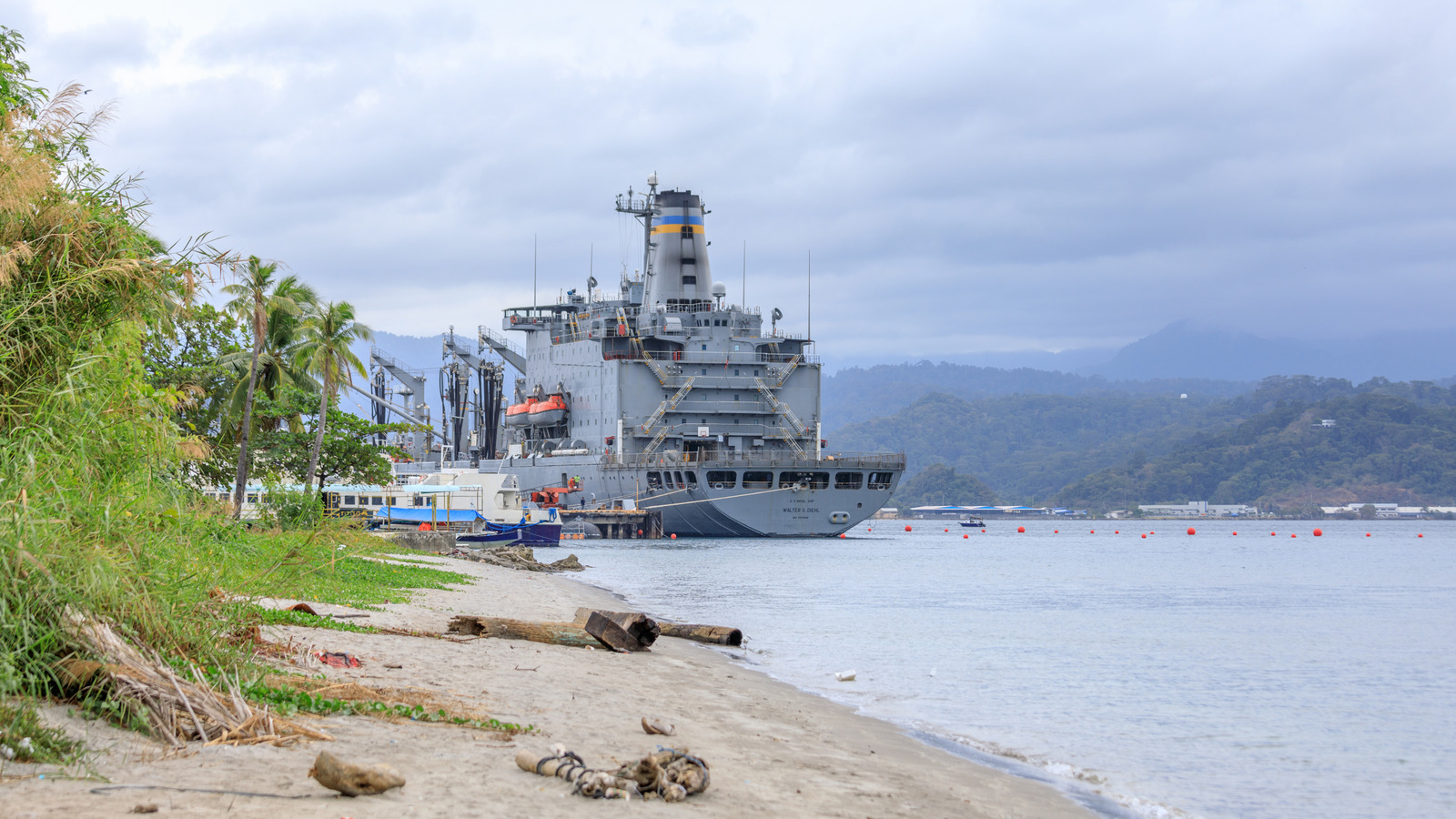Politics
U.S. Plans Major Weapons Hub at Subic Bay to Counter China

The United States is considering the establishment of a significant weapons manufacturing hub at Subic Bay in the Philippines, which has historical ties as one of the largest American military bases. Located just 55 miles northwest of Manila, this site is strategically positioned within close proximity to China, approximately 1,100 kilometers from Shenzhen and Taipei, and 2,800 kilometers from Beijing.
This proposal emerged following a report from the U.S. House Appropriations Committee in June 2025, which directed the Pentagon, State Department, and International Development Finance Corporation to explore the feasibility of a joint ammunition production and storage facility. President Donald Trump has since emphasized the project’s importance, framing it as a means to enhance U.S. military readiness while supporting the Philippines’ defense initiatives.
The initiative aligns with President Ferdinand Marcos Jr.‘s goals outlined in the Self-Reliant Defense Posture (SRDP), aimed at increasing local arms production and reducing reliance on foreign imports. The proposed facility at Subic Bay would reportedly produce essential explosives, including nitrocellulose and nitroglycerin, for both U.S. and Philippine military use.
Strategic Implications and Local Concerns
The strategic significance of Subic Bay cannot be overstated. Its location places it within range of Chinese missiles, raising concerns about regional stability. Since 2023, the Philippines has expanded U.S. access to military bases under the Enhanced Defense Cooperation Agreement (EDCA), moving towards a more permanent U.S. military presence.
If realized, this hub would represent the most substantial U.S. defense investment in the Philippines since the Cold War. However, the proposal has faced considerable criticism domestically. The International Coalition for Human Rights in the Philippines has condemned the plan, describing it as a potential infringement on Philippine sovereignty and warning that it could transform the nation into a “staging ground for U.S. wars in Asia.”
Critics have drawn parallels to the anti-base movements of the early 1990s, when massive protests led to the withdrawal of U.S. forces. Groups such as Pamalakaya, which represents fisherfolk, have voiced concerns over environmental risks, including potential toxic waste from ammunition production impacting local fisheries. There are fears that increased military presence could make the Philippines a target in a U.S.-China conflict.
Even the Subic Bay Metropolitan Authority (SBMA) has responded with caution. While expressing interest in foreign investment, SBMA officials have highlighted legal restrictions on foreign equity and the need to address community concerns and environmental regulations. They clarified that discussions are still in the exploratory phase and that current U.S. operations in Subic focus primarily on logistics and humanitarian support.
Government Responses and Regional Dynamics
The Marcos administration has presented the project as a pragmatic response to escalating tensions in the South China Sea, which Manila refers to as the West Philippine Sea. Defense Secretary Gilberto Teodoro Jr. has indicated a willingness to consider the potential benefits, such as job creation and technology transfer, while noting that no formal proposal has yet been submitted by the U.S.
Nonetheless, the rising U.S. military footprint, including the deployment of advanced missile systems like Typhoon and NMESIS, has sparked debates about the implications for Philippine sovereignty. Vice President Sara Duterte has cautioned against forming too close an alliance with Washington, warning that it could turn the Philippines into a “bullet shield for China.”
Supporters of the proposal argue that the Philippines’ Mutual Defense Treaty with the U.S. could strengthen national security by decreasing dependence on imported arms. As the U.S. continues to expand its military presence, having already secured warehouse space in Subic for prepositioning equipment, the outcome of this plan remains uncertain.
The potential establishment of a permanent weapons hub at Subic Bay poses significant implications for U.S.-Philippines relations and regional dynamics, particularly in the context of China’s growing naval power. The unfolding situation will test how far Manila is willing to align with Washington’s Indo-Pacific strategy and the risks it is prepared to embrace.
-

 Entertainment3 months ago
Entertainment3 months agoAnn Ming Reflects on ITV’s ‘I Fought the Law’ Drama
-

 Entertainment4 months ago
Entertainment4 months agoKate Garraway Sells £2 Million Home Amid Financial Struggles
-

 Health3 months ago
Health3 months agoKatie Price Faces New Health Concerns After Cancer Symptoms Resurface
-

 Entertainment3 months ago
Entertainment3 months agoCoronation Street’s Carl Webster Faces Trouble with New Affairs
-

 Entertainment3 months ago
Entertainment3 months agoWhere is Tinder Swindler Simon Leviev? Latest Updates Revealed
-

 World2 weeks ago
World2 weeks agoBailey Announces Heartbreaking Split from Rebecca After Reunion
-

 Entertainment4 months ago
Entertainment4 months agoMarkiplier Addresses AI Controversy During Livestream Response
-

 Entertainment2 weeks ago
Entertainment2 weeks agoCoronation Street Fans React as Todd Faces Heartbreaking Choice
-

 Science1 month ago
Science1 month agoBrian Cox Addresses Claims of Alien Probe in 3I/ATLAS Discovery
-

 Health4 months ago
Health4 months agoCarol Vorderman Reflects on Health Scare and Family Support
-

 Entertainment4 months ago
Entertainment4 months agoKim Cattrall Posts Cryptic Message After HBO’s Sequel Cancellation
-

 Entertainment3 months ago
Entertainment3 months agoOlivia Attwood Opens Up About Fallout with Former Best Friend





















